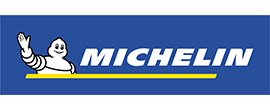When looking for a new set of tyres, you could have come across some terms that were not entirely clear. One of such terms could be the directional tread. To facilitate the review of particular tyre models, we have elaborated a text providing you with everything you need to know about this type of tyres. We will advise you on how to install directional tyres and the advantages and disadvantages of this solution.
Directional tyres perfectly drain water, snow and slush.
The range of tread types encompasses:
- Symmetrical tread – the least popular type. Symmetrical tread tyres are two-way tyres with a simple structure, currently installed mainly in small passenger cars, as well as vans and trucks;
- Asymmetric tread – meaning a different pattern in the inner and outer part, and each element having special properties designed for different performance groups. Asymmetric tyres are most often installed in larger cars with greater engine power. The manufacturer’s offer includes also directional asymmetric tyres;
- Directional tread – ensures perfect drainage of liquids when driving on a wet road.
Directional tyres – identification
The tyre tread pattern of this type is designed in the shape of the letter “V” or “U”. Owing to this specific design, the process of directional tyres assembly is slightly different from typical tyre installation. To guarantee the best performance of the wheel, the direction of the tyre must fully comply with the manufacturer’s guidelines. Directional tyres are provided with special assembly marking on the side.
 The tread of directional tyre resembles the letter “V”.
The tread of directional tyre resembles the letter “V”.
A characteristic element of this type of tread are oblique grooves, from the middle to the left and right rim of the tyre, indicating the direction of the tyre at the very first glance. Very often this tread has additional wide circumferential grooves, which enable efficient draining of water. Such a system allows you to quickly and effectively push water out from under the wheel, thus protecting against aquaplaning.
Summer directional tyres perform equally well during downpours and on wet surfaces. Winter directional tyres additionally ensure increased grip on slush.
Directional or asymmetric winter tyres?
It is not possible to provide an explicit answer to this question, but the majority of winter tyres are one-way type. When facing a choice: directional or asymmetric tyres for the winter, think about the conditions in which you will use them and consider your driving style.
Advantages and disadvantages of directional tyres
Manufacturers designing new models follow different priorities, because so far no technology has been designed that would allow for the improved performance in all aspects at the same time. The perfect tyres do not exist, but certainly the tyre’s directionality may have a positive impact on some parameters.
| Advantages | Disadvantages |
|---|---|
| very good performance on wet surfaces (probability of aquaplaning occurrence reduced by approx. 20%) | 50% probability that the direction of rolling the spare tyre will be opposite to that in the damaged wheel |
| better grip on a dry surface | lower resistance to wear |
| attractive, dynamic tread design | louder drive compared to the asymmetric tread |
Directional tyres – assembly
The fundamental aspect of this solution is the assembly and use of the tyres in accordance with the manufacturer’s intention. Directional tyres are provided with assembly marking on the side, usually in the form of an arrow or other graphic indication and/or inscription (e.g. ROTATION). The direction of rolling must follow the direction of the car’s movement, otherwise the performance of the tyre will be reduced.
 Directional tyre markings. Key to other tyre marking
Directional tyre markings. Key to other tyre marking
To ensure that a set of new tyres is properly mounted, the operation of exchanging the wheels should be entrusted to specialists with professional knowledge and vulcanizing equipment e.g. tyre changers, balancing machines and tyre removal machines, which significantly simplify the whole process. Tyre changing machine is used e.g. for mounting tyres on rims.
Remember to check the effect of the vulcanizer’s work after each disassembly of the wheels. Wrong mounting of directional tyres in the vehicle, i.e. inversely to the orientation indicated by the tyre label, is still one of the most common mistakes!
Directional tyres mounted inversely
If the tyre is installed incorrectly, it does not result in noticeable change in traction and drivability on a dry surface, but the noise level is significantly increased. However, when driving on a wet road, one may notice a decrease in the speed and the occurrence of aquaplaning. In this case, summer directional tyres cannot cope even with the slightest rainfall. Additionally, during very dynamic cornering, the loss of grip can occur with no warning!
 Special equipment is required to replace tires, including lorry and passenger car tire changing machine
Special equipment is required to replace tires, including lorry and passenger car tire changing machine
The best directional tyres
We collect our customers’ opinions on directional tyres on a regular basis. You can read customers’ comments under most of the models available in the Oponeo catalogue.
Popular models of winter directional tyres:
- Bridgestone Blizzak LM001,
- Goodyear UltraGrip 9,
- Uniroyal MS Plus 77,
- Nokian WR D4,
- Continental ContiWinterContact TS850,
- Michelin Alpin 5.
Popular models of summer directional tyres:
- BFGoodrich G-Grip,
- Uniroyal Rainexpert.
- Toyo Proxes T1-R
- Nankang NS 2






















